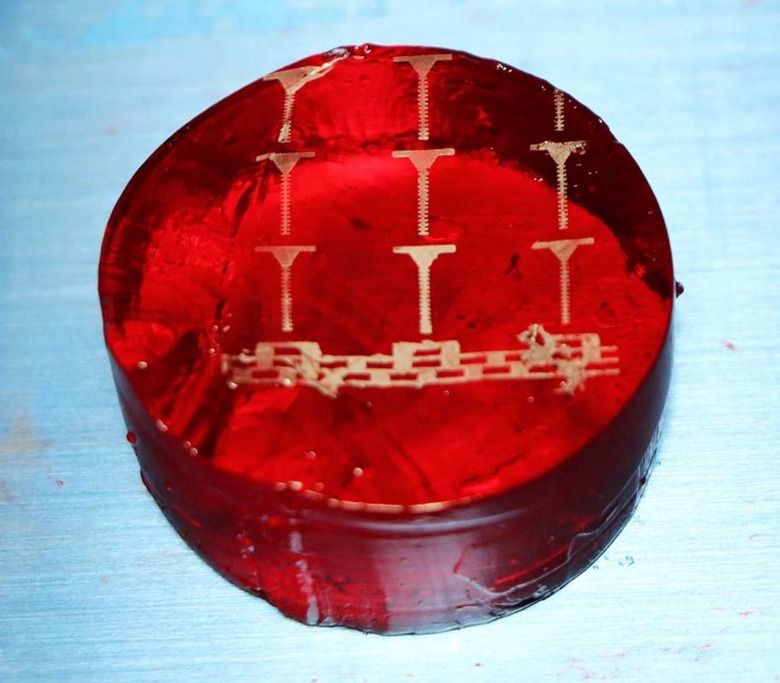Undercooled Metal Tech Needs No Heat To Create Metal Contacts
Researchers from Iowa State University and the Ames Laboratory have created a new technique that allows the printing of metal contacts on just about anything without needing heat to do it. Eliminating the need to heat the metal that creates the metal leads means that the printing can be done on very delicate surfaces.
To prove how well the printing process, called undercooled metal technology, works the researchers printed metal leads on the surface of a gelatin cylinder and directly on the petal of a rose. The tech uses liquid metal, in this car an alloy of bismuth, indium, and tin, that is trapped below its melting point in polished oxide shells. This process creates particles that are about 10 millionths of a meter across.
When the shells are broken using either mechanical pressure or chemical dissolving, the metal inside flows out and solidifies. This creates a heat-free weld for the printing of conductive metal lines and traces on all sorts of materials. The team says that the printing could be done on anything from concrete to a leaf.
The printing process has multiple practical applications according to the team. The technique could be used to make sensors to measure the structural integrity of a building or sensors to measure the growth of crops. The team tested the technique in a paper-based remote control.

That example changes electrical currents when the paper is curved. Engineers also tested the tech to make electrical contacts for solar cells and to screen print conductive lines on gelatin, a model for soft-biological tissues including the brain. Lead scientist Martin Thuo says that the project started as a teaching exercise three years ago, and students have had so many ideas that the process has blossomed into "a million ideas." He added, "and now we can't stop."
